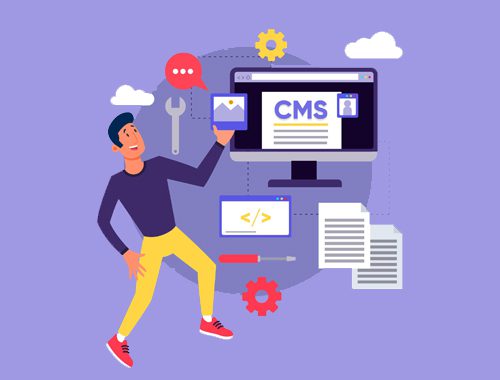Top Trends In Ecommerce Website Development For Enhanced Performance
Does your web store need an uplift? Enhancing the functionality and speed of an ecommerce website is a regular quest, often resembling a complex puzzle. We have discovered that the foundational elements of your site, such as development and hosting, drastically influence its performance, going beyond just looks.
We have also found ourselves tangled in this intricate puzzle, yet have conducted thorough research to discover effective solutions. By researching, we’ve distinguished new patterns in Ecommerce Website Development that can improve performance and transform customer interactions with online stores.
Our article aims to guide you through these advanced trends and emphasise why adopting them could be your pivotal move. Interested in modifying things up? Keep reading!
Key Takeaways
- AI and machine learning make shopping online better by giving suggestions that feel personal. They look at our past buys to guess what we might like next.
- Headless commerce lets people change their website’s look without messing up the technical bits. This makes updates faster and easier.
- Voice search is getting big, with many homes using smart speakers for shopping. Websites need to be ready for voice commands to keep up.
- Progressive Web Apps (PWAs) are important in making mobile shopping smooth. They let sites work offline and load fast on phones.
- Personalising your shop can really help sales. Using data, shops can offer deals or suggest items that fit what each visitor likes.
Understanding Ecommerce Website Development
Ecommerce website development serves to create user-friendly online shopping platforms. Our focus is to ensure the website design facilitates easy shopping, integrates secure payment options, guarantees swift page loading, and certifies mobile-friendly display.
Furthermore, we reinforce the security aspect of each site with SSL certificates to safeguard shopper’s information. In the existing ecommerce space where the number of sites ranges from 12 million to 24 million, perfecting these fundamentals is crucial to highlight a store and retain customers.
The expense involved in establishing an ecommerce site can drastically fluctuate, from £10,000 to over £250,000. This oscillation is reliant on the specific requirements of a business.
While some businesses might favour low-cost open-source solutions, understanding they require greater technical competence; others could opt for SaaS platforms or MACH architecture, valuing the higher adaptability with minimal inconvenience.
For us, data security is paramount, hence we strive to comply with PCI DSS standards for secure customer data management.
The creation of an excellent ecommerce platform blends artistry and technical knowledge.
On this note, let’s transition to discussing the current trends influencing ecommerce…
Key Trends in Ecommerce Website Development
So, we’re seeing some pretty cool trends in ecommerce website development that are shaking things up. Things like using smart tech and making shopping easier with voice commands are leading the charge.
Artificial Intelligence and Machine Learning
We’ve observed how artificial intelligence and machine learning are transforming ecommerce. These intelligent technologies analyse masses of data to provide personal-feeling recommendations.
Have you interacted with a bot at midnight while shopping online? That’s AI operating in the background to provide 24-hour support. We found it exceedingly useful, particularly for instant product queries.
Using amassed data, AI aids web-based stores in improving our shopping experience. It anticipates our future purchases. Furthermore, it oversees inventory by predicting popular items.
This ensures stores remain stocked with items we desire to purchase. We recollect one instance, a website suggested an item we weren’t aware we needed – quite the mind reader!
Not just suggesting items, these technologies ensure repeat customers by making each visit distinct. They learn from customer behaviours and preferences on their website to craft more engaging experiences for subsequent visits – such as welcoming us with deals on items we’ve previously shown interest in but have yet to purchase.
Headless Commerce and API-driven Architectures
Moving on from artificial intelligence, let’s chat about headless commerce and API-driven architectures. They’re all about splitting up the front-end of a website (what users see) from the back-end (all the techy stuff).
This means we can change one without messing with the other. Handy, right? For us, it’s been a game-changer. We’ve seen how updates get faster and customising becomes way easier.
Headless commerce uses something called MACH architecture—don’t worry, it’s simpler than it sounds. It stands for Microservices, API-first, Cloud-native SaaS, and Headless. Basically, it lets us plug in the best tools out there without being stuck with just one big system that tries to do everything but might not do anything perfectly.
With platforms like Shopify and Salesforce getting in on this trend, we’ve found managing our online shops to be more efficient than ever before.
Headless commerce… think of it as Lego blocks for your online shop.
This approach has saved us time and money while also letting us sell across different online channels smoothly. Imagine changing your shop’s layout or adding new features without having to start from scratch each time—that’s headless commerce for you.
Voice Search and Virtual Assistants
We’re seeing a huge change with voice search and virtual assistants in ecommerce. About 75% of homes in the US will have a smart speaker by 2025. That’s massive, right? With Amazon Alexa and Google Assistant leading the way, shopping has never been easier or more hands-free.
People are now using their voices to find products, buy them, and even track orders without lifting a finger. It means we need to get our websites ready for voice searches to make things easy for customers.
Our goal is to make shopping smooth with voice-activated help. Imagine asking your device to find a new pair of shoes and getting options read out loud. Or saying “buy now” without clicking through screens.
We’re working on making our sites understand these commands better every day. Voice-enabled shopping isn’t just cool; it’s becoming essential for keeping up with how people prefer to shop now.
Progressive Web Apps (PWAs) and Mobile-first Design
So, after talking about voice search and virtual assistants, let’s chat about Progressive Web Apps (PWAs) and mobile-first design. It’s a big deal in the ecommerce world. PWAs are making shopping on your phone way better.
They let websites work like apps on your phone. You can even use them without internet! And guess what? The PWA market is set to hit around USD 40.3 billion by 2033.
Here’s the kicker — in 2023, platform segment of PWAs had more than half of the market share at over 57%. This means loads of online shops are choosing PWAs to make their sites super fast and friendly for folks using phones to browse and buy stuff.
Because who likes waiting for pages to load or not being able to shop when you’re offline?
This trend isn’t just about looking good on a smartphone screen; it’s also about keeping customers coming back for more with speedy load times and cool features like push notifications – kind of like what you get from an app you download from the store but without taking up space on your phone.
So, we’re all in for making our users happy by hopping onto this trend that blends web and mobile app perks perfectly.
Personalisation and Hyper-Targeted Marketing
Progressive Web Apps (PWAs) and Mobile-first Design set the stage for our next topic: Personalisation and Hyper-Targeted Marketing. This trend is all about making shopping feel special for each customer.
We use tools like AI, data analytics, and automation to create unique experiences based on what customers do right now. It’s like having a personal shopper who knows exactly what we want.
We get to know our customers better through hyper-personalisation. Machine learning helps us find valuable insights about them. For instance, we can offer personalised recommendations or customised marketing messages suited to their needs in real-time.
The result? Better engagement with users, which boosts sales and conversion rates! Plus, when customers feel noticed, they are more likely to come back again.
Dynamic pricing also plays a big role here. Imagine getting discounts just because of your shopping habits! Customised promotions keep customers loyal to us over time. It’s clear that using AI-driven marketing makes a big difference in today’s online shopping experience—bringing both joy to shoppers and success for us as businesses!
Benefits of Adopting These Trends
Adopting these trends can really boost how users feel while shopping. It also helps websites sell more and grow easily.
Enhanced User Experience
An enhanced user experience is key for eCommerce success. Mobile optimisation plays a significant role here. Companies using mobile-first design see better user retention and increased sales.
It’s all about making things easy for shoppers.
We also have hyper-personalisation, which uses data analytics, AI, and Machine Learning. This approach helps customise shopping experiences for each customer. Furthermore, augmented reality (AR) allows for virtual try-ons.
It’s fun and reduces return rates… who enjoys sending items back anyway? Accessibility features like voice recognition and AI-powered assistants make shopping easier too. Everyone deserves a great shopping experience!
Improved Conversion Rates
Now, let’s shift our focus to improved conversion rates. We all know that getting visitors is great, but what matters most is how many of them actually make a purchase. Quality factors—like fast loading times and clear product descriptions—play a big role here.
Promoting discounts and free shipping makes shoppers happy too. They are more likely to click “buy” when they see these offers.
E-commerce sites can lose up to £5,600 every minute during outages due to poor scalability. This shows the need for strong systems that handle traffic well. It also highlights how essential it is for small and medium enterprises (SMEs) to manage their conversion rates effectively.
High conversion rates help in adopting digital technologies smoothly, making businesses grow faster.
Using effective promotional strategies without mixing them with quality elements boosts our chances of success even more. It’s simple – if we focus on providing good service while offering incentives like discounts or free shipping, we can truly enhance conversion rates!
Scalability and Flexibility
Improved conversion rates lead us to think about scalability and flexibility. A site that can grow is key for success. We want systems that handle more visitors without slowing down.
Did you know e-commerce sites can lose up to £4,600 a minute during outages? That’s a lot of cash!
Headless commerce helps with this issue. It separates the front end from the back end. This gives us greater freedom to make changes quickly. Microservices architecture also allows different parts of our app to scale independently, which is great for efficiency and fixing errors smoothly.
Platforms like Medusa.js, Commercetools, Magento, and Spryker offer good options for expandability and adaptability. They let us build an adaptable architecture that fits our needs over time (because who doesn’t want their website to keep up with trends?).
With these tools, we gain agility and versatility in our online shops—perfect for staying ahead in the game!
Conclusion
We’ve explored many trends in ecommerce website development. AI and machine learning help us understand customers better. Voice search makes shopping easier for everyone. Progressive web apps offer fast, mobile-friendly experiences.
These changes can really boost our online sales.
Using these strategies is simple and effective. They let us connect with shoppers in new ways. The impact of adopting them can be huge for our business growth.
If you want to learn more, check out resources on web hosting or payment solutions. Taking action now could lead to great success later on! Let’s embrace these trends and see where they take us!
FAQs
1. What are the latest trends in eCommerce website development?
Well, you know how fast things change online, right? One big trend is using mobile-first design. More people shop on their phones than ever before! Also, integrating chatbots for customer support has become quite popular—it’s like having a helper available 24/7.
2. How can these trends enhance website performance?
Ah, that’s where it gets interesting! When websites are designed with mobile users in mind, they load faster and look better on smaller screens. Plus, chatbots can handle multiple customer inquiries at once—so no more waiting around for answers!
3. Are there any specific features I should consider adding to my site?
Definitely! Think about including personalised recommendations based on user behaviour—it feels like magic when a site knows what you want! And don’t forget about easy navigation; if customers can’t find what they’re looking for quickly, they’ll just bounce away…and we don’t want that!
4. How do I keep up with these trends without getting overwhelmed?
That’s a great question! Start small—maybe focus on one or two changes at a time. Keep an eye on industry news and blogs to stay updated (it helps!). Remember: even small improvements can make a big difference over time!






